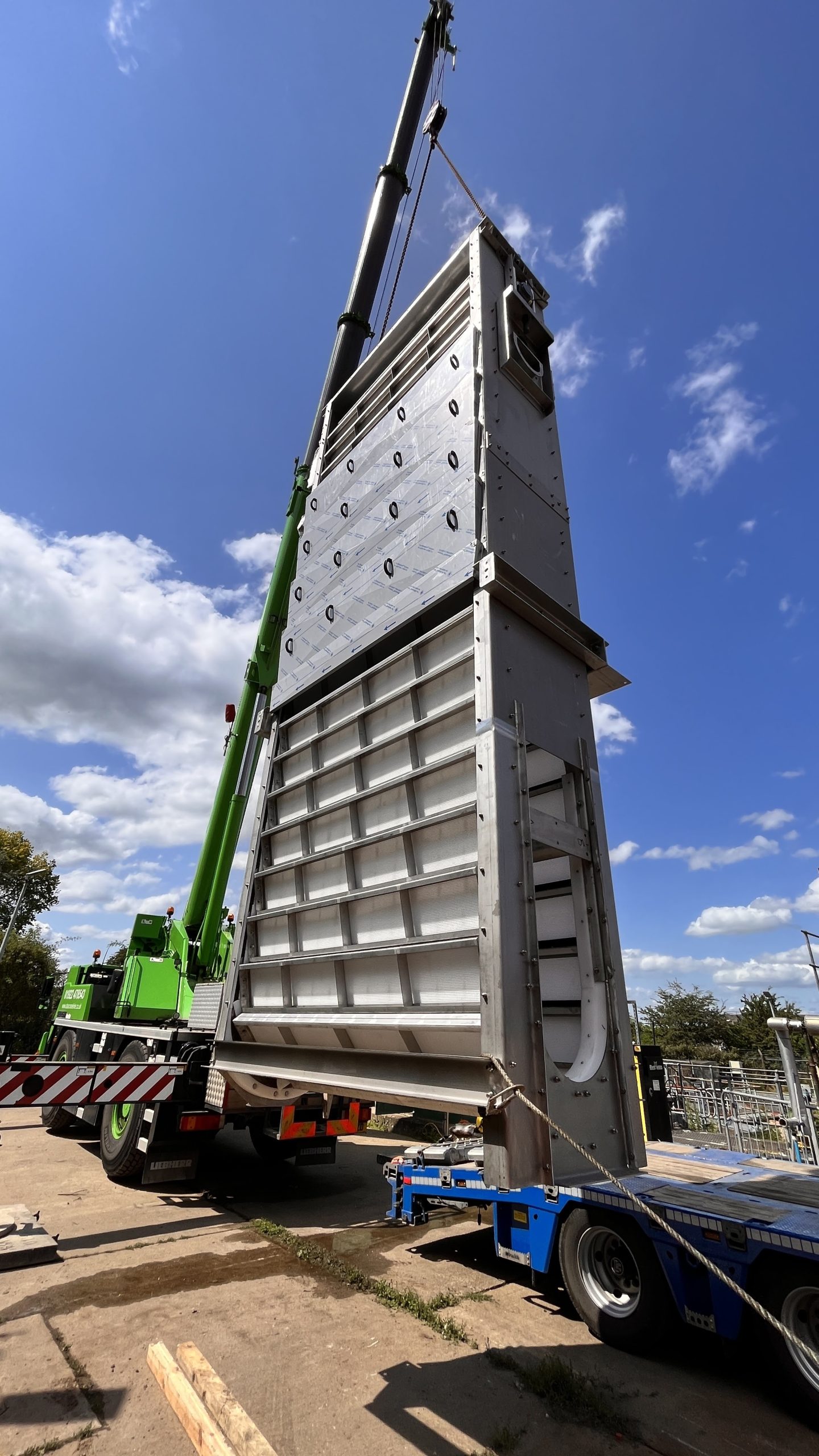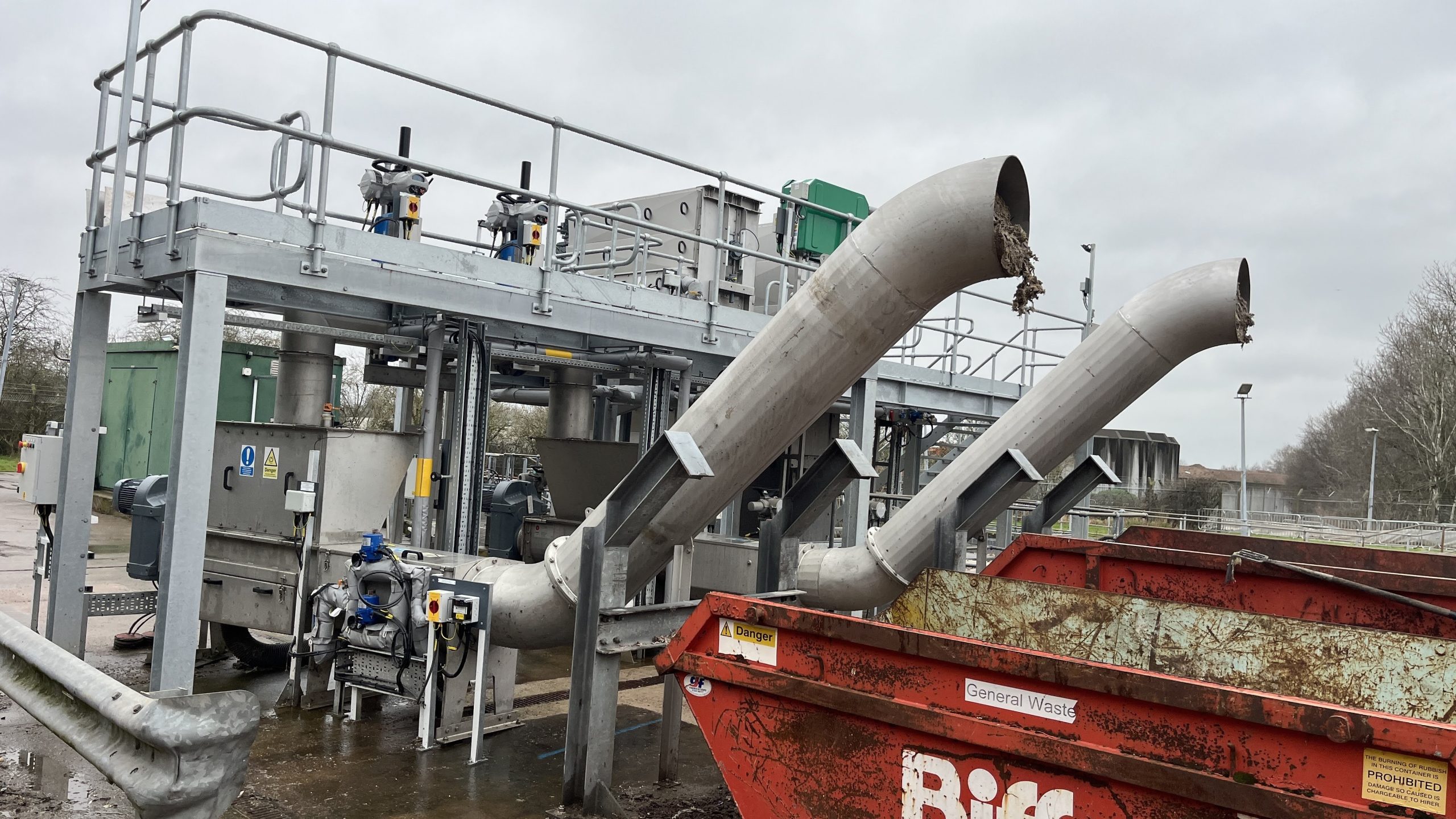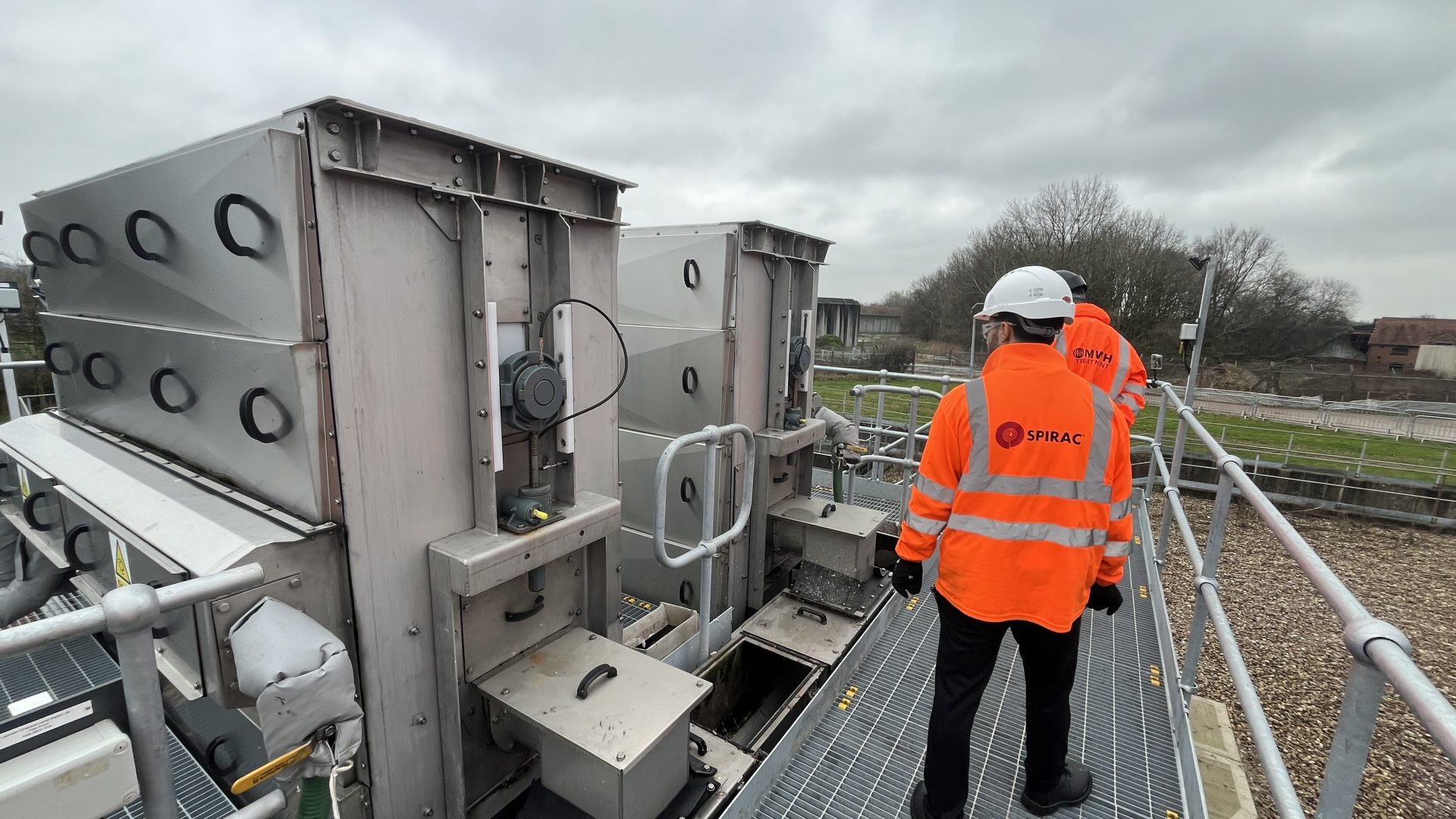
At a crucial stage of a £43M upgrade, including a critical inlet screen and screen handling replacement, the last thing a contractor would want is for not one, not two, but three back-to-back storm events.
Yet for one leading solution provider to the water industry, it provided the ultimate test for new inlet screens at Hartshill Sewage Treatment Works (STW) near Nuneaton (pe 100,000) in Warwickshire, England.
Since July 2022 (through to November 2024), MWH Treatment is responsible for the design and integration of new inlet screens and screens handling, expansion of the current primary and secondary treatment, plus the addition of a new tertiary treatment and a sludge treatment system.
This important STW is an all-flows-works; being upgraded as part of proactive capital maintenance, and in lieu of an additional 430 l/s which is to be pumped over from Hinckley (pe 50,000) in nearby Leicestershire, to create a total flow of 1560 l/s.
Working to reduce steel and concrete use where possible, Severn Trent Water and MWH Treatment wanted to reuse the existing inlet structure; removing the need for any new civils, or modifications to the existing assembly, which would have increased the programme of works substantially; adding to costs, environmental impact and health & safety risks. Using 3D digital models to increase on-site productivity, and with the benefit of SPIRAC’s vertical, space-saving screens able to reach 2m down (rather than a restrictive 1m), the inlet was meticulously planned out in the virtual space. This has made it much easier and more economic to fine-tune a design, rather than have equipment arrive on site, only for it to be sent away again for modifications.
‘The final screens would be spot on’
“From the start,” said Vince Walker from MWH Treatment, “SPIRAC assigned a dedicated team so that we had continuity and clear lines of communication. Leading up to the pressure of the switchovers from old to new equipment, we were regularly sharing our computer screens with SPIRAC’s Projects & Technical team, so that the new temporary launder systems would keep us online and that the final screens would be spot on; pre-assembled, tested, ready to slot right in. In the meantime, SPIRAC removed all the redundant equipment; also supplying us with a new control philosophy for the news screens and compactors.”
“It seems easy to say now,” he added, “especially with the foul weather after the commissioning works, but this is where planning and collaboration is so important. In a very carefully managed, phased approach, we had five separate stages of switching over, with SPIRAC removing the old screens, introducing a temporary launder system, whilst ensuring that flows were maintained, but with no loss of screening.”
‘The like of which we’d not seen before’
He continued: “The SPIRAC system has been integrated into the Hartshill treatment works system for the past 6 months, facing persistent heavy rain; the like of which we’ve not seen before. This has served to prove that the two new screens from SPIRAC could do their job. In the first few hours particularly, the screens took a real hammering, but they passed the test with flying colours. We’ve had no issues with them at all. Overall, the throughput has been increased by 200 l/s, but they are working fine, and with their self-cleaning design, only basic maintenance is required.”

‘Improve local river quality’
He concluded: “The upgrade for both Warwickshire and Leicestershire is a very positive one, which will improve local river quality. Inlet changeovers always try to be timed to avoid storm seasons. However, due to the ever-changing weather systems these days, it is becoming harder to find a good window to complete these necessary works. While I really enjoy working with the challenges of changing inlet screens, I hope we don’t have to experience the same deluge again as when we were trying to keep everything online for the installation of the new SPIRAC screens, launder systems and compactors! Working closely together on site, and embracing our digital delivery toolbox, has really paid off.”



